People
New Met Director Max Hollein on How He Plans to Lead the Museum Into a More Egalitarian Future
To mark the start of a new era, artnet News's editor-in-chief spoke to Hollein about how the Met can represent everyone, better.
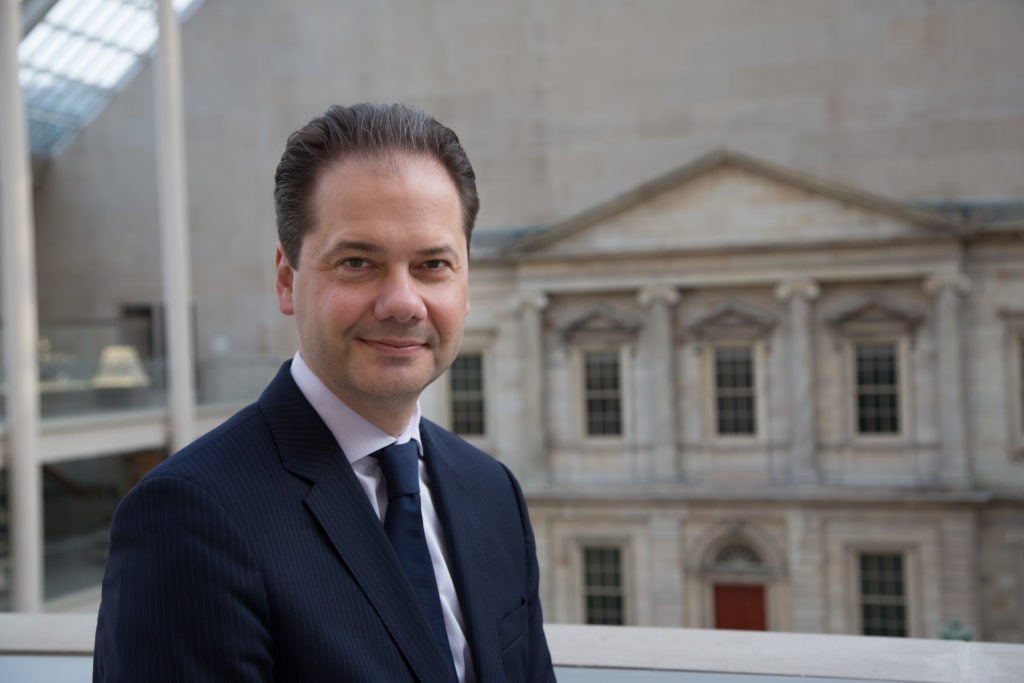
To mark the start of a new era, artnet News's editor-in-chief spoke to Hollein about how the Met can represent everyone, better.

Andrew Goldstein

Earlier this month, presiding over his first press conference as the newly installed director of the Metropolitan Museum of Art, Max Hollein stood at the spotlit entrance to tenebrous galleries and spoke about the artist being surveyed within. “Delacroix is a defining figure in European art in the 19th century,” he said. “He is one of the great colorists in art history. But his work is always about human nature in all its complexities.”
Such a trajectory of thinking—to begin with the wide-angle historical view, take in the surface allure, and then drill down into the more philosophical implications—is a hallmark of the Austrian-born museum prodigy’s approach to art, and one of the reasons why his arrival at the institution widely viewed as the greatest encyclopedic museum in the world has been cause for such excitement among those in the field.
That honeymoon, however, will only last so long. Coming to the Met at a time when nearly every aspect of the universal museum is coming into ethical question, Hollein has to confront daunting challenges including the re-evaluation of the colonial era, the advent of transformative technology, the changing nature of modern information consumption, the fusion of contemporary art with global capital, and the foregrounding of issues of identity in the cultural agora. It’s a sign of the times that the most frequently heard knock against the well-liked Hollein is that he is a white European male. Add to this the fact that his predecessor was essentially driven out of his post in a staffwide mutiny for daring to change the ocean-liner-like institution’s course too quickly, and you’ll begin to understand the scope of the task Hollein has before him—one that he will be expected to carry out nimbly, expeditiously, and with zero visible sweat.
It helps, then, that he has proven capable of juggling acts in the past—not to mention the occasional magic trick. The son of the celebrated architect Hans Hollein and the onetime protégé of the world-devouring museum director Thomas Krens, Hollein once ran three art institutions simultaneously—Frankfurt’s Schirn Kunsthalle, Städel Museum, and Liebieghaus Sculpture Collection—and most recently oversaw two San Francisco museums, the Legion of Honor and the de Young, with boundary-pushing aplomb and a sense of theater. (He once paired Jeff Koons’s shiny contemporary-art bonbons with austere, marmoreal sculptures from Greece and Ancient Rome.) Such multi-museum agility will come in handy in New York, since the Met consists of the Fifth Avenue flagship, the Cloisters, and the Met Breuer—at least, until 2020, given the latest news.
At the Met, Hollein will also be mostly relieved of a museum head’s typical financial duties—despite the fact that he has a MBA, and a track record for inspired business maneuvers. Those will be handled by Met CEO Daniel Weiss, who will work with Hollein as an equal partner with divided but overlapping responsibilities.
To better understand how Hollein, an affable and erudite baseball fan who still trails his sentences with the occasional “ja?”, plans to attack the weighty enterprise before him, artnet News’s editor-in-chief sat down with the new Met director to discuss his vision for America’s most august museum.
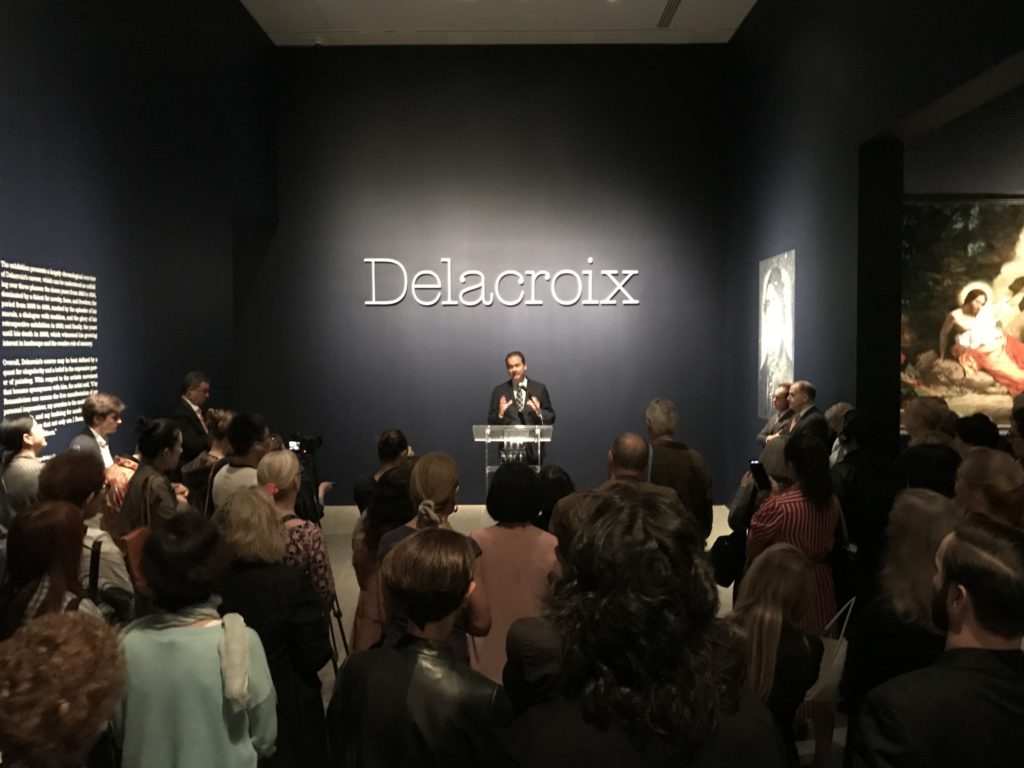
Max Hollein giving his first address to the press as Met director. Photo by Andrew Goldstein
You just presided over the opening of the Delacroix show, one of those grand historical extravaganzas that draw crowds to the Met and elicit adulation from critics. It’s also the kind of mega-budget Eurocentric show that celebrates the achievements of another dead white male, and one whose Romantic paintings of a voluptuary, vicious Near East helped set the template for Orientalism. In other words, this is a show that sits at the center of a conversation in the broader culture. What do you make of the exhibition, and how does it fit into the Met you envision going forward?
The Met, because of the sheer quality of its collections and scholarly ambitions, almost has the responsibility to do shows like “Delacroix” in a way that no other institution can. Having been a museum director for 20 years, there have actually been exhibitions where I would first check with Philippe de Montebello to ask, “Are you doing this show? Because if you’re thinking about it, the Met should do it rather than us.” There’s often only one opportunity to do a show, and the Met can get it right because it can get the loans that would make it the seminal show on the subject. And that’s exactly what I think the Met should be doing.
Then there’s the whole question of how an exhibition not only exemplifies an artistic moment, but also influences the course of art history. The “Delacroix” exhibition not only shows you one of the towering figures of the 19th century, but also the point where Modernism started. To more directly address what I think you’re getting at, we always must understand that art doesn’t necessary tell the truth—it shows a particular perspective on things. A painting is, of course, a historical artifact, but at the same time it conveys a certain kind of historical narrative, a certain interpretation, where there are in fact multiple truths.
Very interesting. Well, congratulations on taking the reins of the greatest encyclopedic art museum in the world. Now that you’re here, what do you want to do with it? And what are you going to do differently?
During the search process it was clear, through my conversations with Dan Weiss and the board, that we all feel that the Met is a great institution. So I don’t have the expectation, nor is there the expectation, that I have to change the whole idea. But of course, as the director you have to give further leadership when it comes to where we place focus and attention. And that has to do, first and foremost, with the changing expectation of what an encyclopedic museum is and should be doing.
I don’t want to do an art-historical excursus, but encyclopedic museums were all founded more or less as an idea of the enlightenment—to bring the cultures of the world to one place and then tell some kind of linear story. The perception was that you start with ancient Egypt, then Greece and Rome, and then Europe, so you have a linear, very Eurocentric narrative. Obviously, in our time of globalism, it’s way more important to show not only the simultaneity of cultures and how they are more intertwined than we once conveyed, but also that there are different perspectives on history depending on the vantage point of the culture in question.
That’s something that I think would enhance our collections, and so an emphasis will be on further evolving our displays in crucial areas. The Islamic galleries that recently reopened basically do exactly what I just described. Then the British galleries will open in 2020 and show you that an object was actually embedded in a broader social, historical, and sometimes also economic context. For us, it’s also a priority to apply that [framework] to the areas of Africa, Oceania, and the Americas, and the Ancient Near East, which is obviously one area that has completely changed. That means you will see a more fluid understanding of the intersection of cultures. This is something we are already doing, but it will be further amplified.
That also comes with another evolution in the Met’s voice. The great paintings of Frederic Church and the Hudson River School, for example, can be seen as a narration of the development of America. But the reality is that that’s only one truth, because it’s actually the story of the white settler and Manifest Destiny. So, if I’m a Native American, I can appreciate this artwork because it’s fantastic landscape painting and an important part of art history, but the historical narrative that is provided is clearly going in one direction. We have to complicate that story.
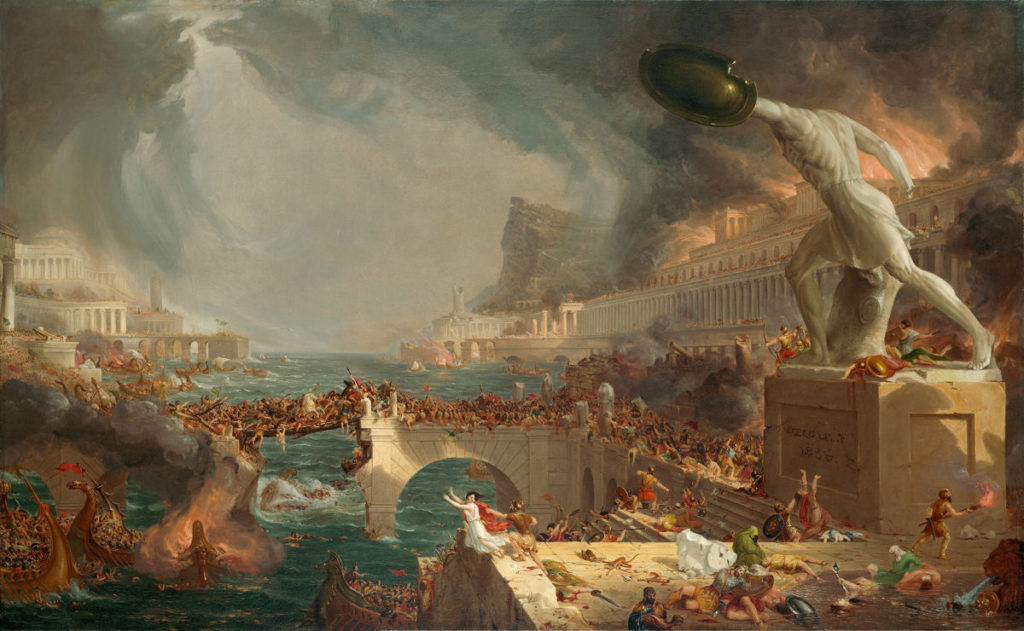
Hudson River School painter Thomas Cole’s The Course of Empire: Destruction (1836). Courtesy of the Met.
There’s a maxim that “history is written by the victors.” And if you were to look at who the victor is in the Met’s version of art history, it’s a Western, Eurocentric white male figure. So while people have been praising your appointment from all sides, the one criticism that has surfaced is that they’re disappointed the Met didn’t use the opportunity to choose a woman or a person of color. I think what that is reflecting is a fear that, no matter what adjustments to the narrative are made, it’s still going to be telling the story of art history from this same white, male, Eurocentric victor perspective. How important do you think it is to bring in diverse viewpoints in terms of the identity of curators and the identity of other officials in order to make these narratives more legible?
This is an important point. When I had conversations with the board during my search process, coming from San Francisco where this is also a very important topic, I made it clear that I would see diversity not only as a necessity for us but also an important agenda that doesn’t start and stop with staffing. The museum itself has to have a diverse approach to our narratives, viewpoints, and perspectives. It has to happen on various levels, not only with what we collect and how we display it, and not only with how we diversify the staff, but also with how we diversify our narratives.
You’re coming into a city where Bill de Blasio is the mayor, and he’s created a challenge for city museums to diversify their staffs and their boards. Is this something you have been paying attention to?
The institution has fully embraced that under Dan Weiss, and there is a plan for the institution to do that on both a board level and a management level. But in addition to the staffing question in curatorial and conservation—which starts with internships, and the question of availability, and whether everyone can afford to do an internship—what I as the director bring to the table is the understanding that you also have to open up the narrative.
The Met is probably the one museum that is really seen by the whole world as their museum, and that’s something that I was extremely drawn to. It truly is a museum of the world and for the world, and that’s not only because of its size. People who live in completely different places and who may never actually come to New York spoke to me about how the Met is their most beloved museum. That’s something that can give us great pride, but it comes with a responsibility as well.
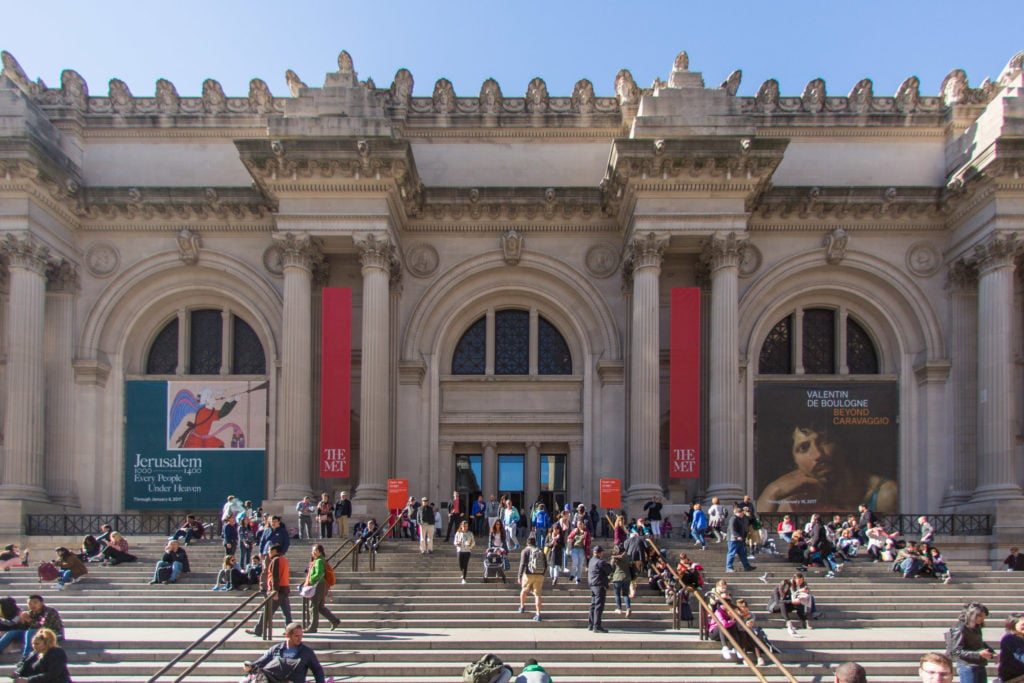
The Metropolitan Museum of Art. Photo courtesy of the Met.
What would you say is your key function at the Met—your main job to do?
You have to do many things [laughs]. But there are two guiding principles for me. I have to first and foremost be an enabler, someone who, together with Dan Weiss, helps curatorial and education staff do their best work by coaching them, encouraging them, and leading them.
Setting priorities and agendas is also an important function. I’m the last director who would say, “I’m not going to curate shows, but I’m going to tell [Chairman of the Department of European Paintings] Keith Christiansen, ‘This painting should hang to the left rather than the right.’” It’s more about understanding the full spectrum of possibilities and saying, “This, this, and this are what we need to focus on.” The challenge of the Met is and will always be that everything is possible.
If I were the director of a museum in Munich, I have a certain range of possibilities and I come from a certain history. Nobody is asking a museum in Munich, “What are you doing about Africa, and are excavations now a big issue?” The Met is involved in all the different cultures and areas of understanding, and it needs to foresee and sometimes react to changes in the culture. That’s my job. Enabling and prioritizing are what I see as my main guiding principles.
What would you say are three main issues that the Met needs to grapple with—the three societal, generational challenges?
So one, which we spoke about, is establishing the narrative of an encyclopedic museum for the future in regard to its representations of the cultures of the world and how they intersect. We have now seen different models of this—the Louvre Abu Dhabi had a certain approach—so that’s one priority. It doesn’t mean the Met is changing—it’s more like you evolve the narratives and that manifests itself in changes in the collection presentation and our exhibition programming.
Another issue is that, if you are a museum of the world and for the world, it’s very clear that when you say the word “museum,” you’re not solely talking about the physical manifestation of an institution. I see “museum” as a task that reaches way beyond the physical incarnation of the institution. There is so much responsibility and opportunity for us to be a conveyor of cultural understanding and art history. That means amplifying our work through digital media, through education, and through participating in complex, broader cultural debates.
And the third, which is a continual discussion at the Met, is the issue of contemporaneity at an encyclopedic institution. That would be another one of our priorities, but not just in terms of the collection. It’s more about, what does “contemporary” mean at the Met? How do we define ourselves as a contemporary institution?
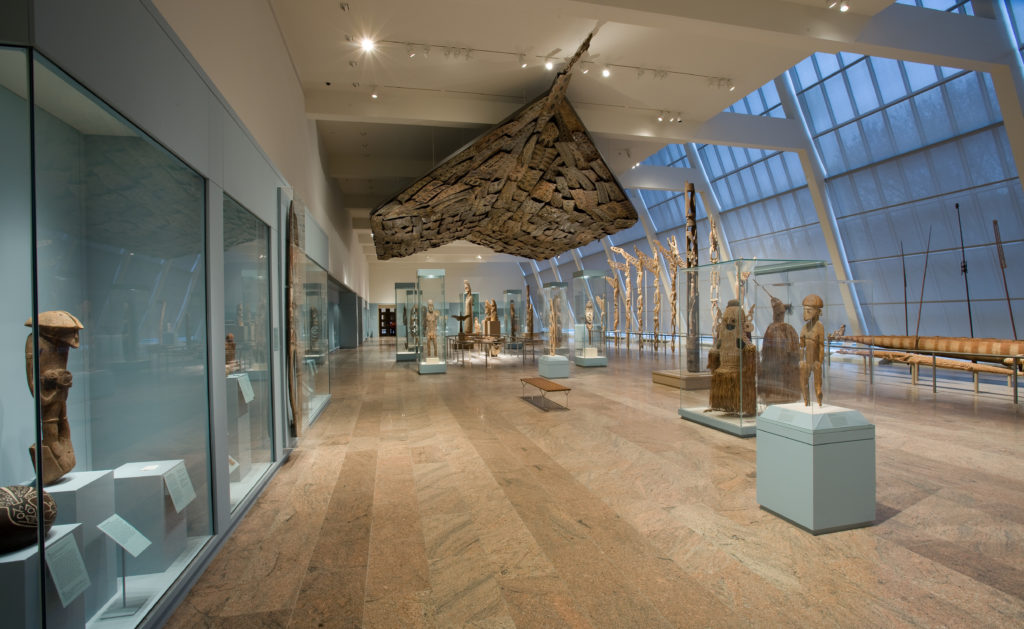
Conveniently enough, those are exactly the three lines of questioning I’ve prepared for you: identity, technology, and contemporary art. I think it’s interesting that the lens of identity is not only being placed on the staffing and administration of museums, but also on museum collections. In fact, it’s arguable that the most universally shared museum experience of this year occurred during Black Panther, in its unforgettable opening scene of an encyclopedic museum’s African collection being “liberated.” What did you think of that scene, and what do you make of the anger that is felt today over the legacies of colonialism, which are driving restitution debates across Europe at a time when there is a widespread push toward the redistribution of patrimony back to places where it was historically taken?
The question of restitution and national patrimony is of course one that will be part of the museum dialogue for many years, and it will be amplified amid the rise of nationalism, especially in Europe, because it’s used as a tool to redefine your own cultural identity. So we will be part of that conversation. But, on the other hand, I’ve never experienced another museum that so many people from around the world feel attached to and represented by. An important answer to your question is that people need to feel that the museum represents their perspectives and their values, and they need to feel that it understands their culture and its development over time.
That’s something that the Met does, and can do, well. There are other places where you probably will never feel represented, in a certain way. One of the museums that I used to run, the Städel Museum, was founded by the city of Frankfurt and had a completely, solely Eurocentric view. And I said to the board, “We shouldn’t change that, because that’s really our identity.”
At the Met, you have a very different approach, which has to do with the history of the museum opening up to Asia in such a significant way. I would say that one of the most cutting-edge and almost avant-garde moves of the Met was the establishment of the Arts of Africa, Oceania, and the Americas galleries with the Rockefeller gift [in 1969]. The Met was the first institution that said, “No, no, these works are not just tribal artifacts—we want to see them as important objects of art history and the development of fine art.” We want that perspective to be part of the identity of the institution.
This is part one of a two-part interview. The second installment will explore Hollein’s views on contemporary art, the composition of the board, and the future of fundraising.